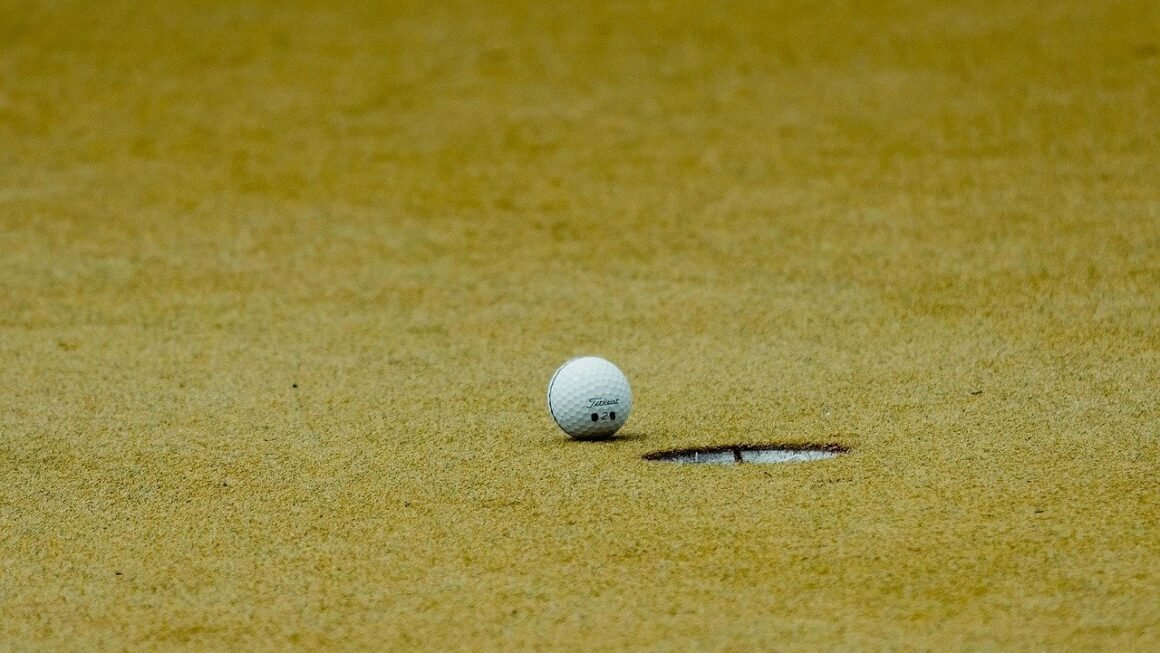Table tennis, often called ping pong, is more than just a recreational pastime; it’s a sport of incredible speed, precision, and strategy enjoyed by millions worldwide. From casual games in basements to intense professional competitions, the accessibility and appeal of table tennis are undeniable. Whether you’re a seasoned player or just curious about the game, this comprehensive guide will delve into the fundamentals, techniques, equipment, and benefits of this engaging sport.
The Basics of Table Tennis
Understanding the Game
Table tennis is played between two or four players (singles or doubles) who hit a lightweight ball back and forth across a hard table divided by a net. The objective is to score points by hitting the ball so that it goes over the net and bounces on the opponent’s half of the table, and the opponent is unable to return it legally. A point is typically awarded to the player if their opponent fails to make a legal return, hits the ball out of bounds, or commits other violations.
Key Rules and Regulations
- Service: The serve must start with the ball resting on the open palm of the server’s free hand. The ball must be tossed at least 6 inches into the air and struck so that it bounces first on the server’s own side of the table and then on the receiver’s side.
- Return: After a legal serve, each player must alternate hitting the ball after one bounce on their side of the table.
- Let: A “let” is called if the ball hits the net on a legal serve and then bounces on the receiver’s side. The serve is replayed without awarding a point.
- Scoring: Games are typically played to 11 points, and a player must win by at least two points. Matches are usually best-of-five or best-of-seven games.
- Touching the Table: Players are not allowed to touch the table with their free hand during play.
Table Tennis Terminology
- Topspin: A forward rotation of the ball, causing it to dip downwards and bounce forward quickly.
- Backspin: A backward rotation of the ball, causing it to float more and bounce upwards after hitting the table.
- Sidespin: A sideways rotation of the ball, causing it to curve in the air and bounce sideways.
- Smash: A powerful, offensive shot hit with a downward angle.
- Block: A defensive shot used to return a fast, attacking shot.
- Push: A soft, controlled shot with backspin, typically used to keep the ball in play.
Essential Equipment
Table Tennis Table
The table is a crucial piece of equipment. Official tables must meet specific dimensions.
- Size: 9 feet long, 5 feet wide, and 30 inches high.
- Surface: The surface should be a dark, matte color (usually green or blue) to provide good visibility.
- Material: Typically made of wood or particleboard, with a consistent and uniform bounce.
Example: Stiga and Butterfly are known brands for quality tables. Cheaper, recreational tables can be found in most sporting goods stores.
Table Tennis Rackets (Paddles)
Also known as paddles, rackets are typically made of wood covered with rubber on one or both sides.
- Blade: The wooden part of the racket, which provides the structure and feel.
- Rubber: The rubber covering the blade, which affects the ball’s spin, speed, and control. Different types of rubber are available, offering varying levels of grip and responsiveness.
- Grip: The handle of the racket, which should be comfortable and allow for a secure grip.
Example: Consider a beginner racket with good control, such as the Killerspin Jet200. As you improve, you can customize your racket by selecting different blades and rubbers.
Table Tennis Balls
Table tennis balls are small, lightweight, and hollow.
- Size: Standard balls are 40mm in diameter.
- Material: Made of plastic.
- Quality: Balls are rated using a star system (1-star, 2-star, 3-star), with 3-star balls being the highest quality and preferred for competition.
Example: Purchase 3-star balls from brands like Nittaku or DHS for consistent bounce and durability during practice and matches.
Other Important Equipment
- Net and Posts: Essential for dividing the table and defining the playing area.
- Proper Attire: Comfortable clothing and non-slip shoes are important for freedom of movement.
Basic Techniques and Strategies
Stance and Footwork
- Ready Position: Stand with your feet shoulder-width apart, knees slightly bent, and weight balanced.
- Footwork: Use quick, small steps to move around the table efficiently. Common footwork patterns include side-to-side steps and in-and-out movements.
Example: Practicing shadow footwork drills without a ball can help improve your agility and coordination.
Forehand and Backhand Strokes
- Forehand Drive: A basic offensive stroke that generates topspin. Swing forward and upward, contacting the ball at the peak of the bounce.
- Backhand Drive: Similar to the forehand drive, but executed on the opposite side of the body.
- Push: A defensive shot with backspin, used to control the ball and disrupt your opponent’s attack.
- Block: A defensive shot used to return a fast, attacking shot. Keep the racket close to the body and use a short, compact motion.
Example: Practice each stroke repeatedly, focusing on proper form and technique. Use a multi-ball training system to improve consistency and speed.
Serving Techniques
- Varying Spin: Experiment with different types of spin on your serves (topspin, backspin, sidespin) to make them more difficult to return.
- Placement: Vary the placement of your serves to target your opponent’s weaknesses.
- Deception: Hide your serve intentions to surprise your opponent.
Example: Try serving with a combination of backspin and sidespin to force your opponent to make an awkward return.
Basic Strategies
- Control the Center: Position yourself to cover the center of the table, allowing you to react to shots on both sides.
- Attack Weaknesses: Identify your opponent’s weaknesses and target them with your shots.
- Vary Your Play: Mix up your shots, spin, and placement to keep your opponent off balance.
The Benefits of Playing Table Tennis
Physical Benefits
- Improved Cardiovascular Health: Table tennis provides a good cardiovascular workout.
- Enhanced Hand-Eye Coordination: The fast-paced nature of the game requires precise hand-eye coordination.
- Increased Agility and Reflexes: Quick movements and reactions are essential for success in table tennis.
- Improved Balance and Coordination: The constant movement and adjustments required in table tennis enhance balance and coordination.
Mental Benefits
- Improved Focus and Concentration: Table tennis requires intense focus and concentration.
- Enhanced Cognitive Function: The strategic nature of the game challenges your mind and improves cognitive function.
- Stress Relief: Playing table tennis can be a fun and engaging way to relieve stress and tension.
- Social Interaction: Table tennis provides opportunities for social interaction and building relationships.
- Strategic Thinking: Requires players to plan and adapt strategies.
Social Benefits
- Community Building: Table tennis clubs and leagues offer opportunities to connect with other players.
- Teamwork and Cooperation: Doubles play fosters teamwork and cooperation skills.
- Friendships: Playing regularly with others can lead to lasting friendships.
Example: Many senior centers and community centers offer table tennis programs, providing opportunities for social interaction and physical activity.
Advanced Techniques and Training
Advanced Strokes
- Loop: A powerful topspin shot that curves sharply downwards.
- Chop: A defensive shot with heavy backspin, used to return a topspin attack.
- Flick: A quick, wrist-driven shot used to attack short balls.
- Banana Flick: A type of flick that involves hitting the ball around the side of the body, creating a curved trajectory.
Advanced Footwork
- Crossover Step: A quick footwork pattern used to cover wide angles.
- Shuffle Step: A sideways footwork pattern used for quick adjustments.
- Pivot: A quick rotation of the body, used to generate power and reach for shots.
Advanced Strategies
- Serve and Attack: Use your serve to set up an attacking opportunity.
- Third Ball Attack: Attack the third ball after your serve.
- Counter-Looping: Return a loop with another loop, creating a fast-paced, aggressive rally.
Example: Seek coaching from a qualified table tennis instructor to learn and refine advanced techniques.
Training Drills
- Multi-Ball Training: Practicing strokes and footwork with a large number of balls.
- Target Practice: Aiming for specific targets on the table to improve accuracy.
- Match Play: Playing competitive matches to improve your game under pressure.
Mental Training
- Visualization: Mentally rehearsing successful shots and strategies.
- Positive Self-Talk: Using positive affirmations to boost confidence.
- Stress Management: Learning techniques to manage stress and anxiety during competition.
Conclusion
Table tennis is a sport that offers a unique blend of physical and mental challenges, making it accessible and enjoyable for people of all ages and skill levels. Whether you’re looking for a fun way to stay active, improve your cognitive function, or compete at a high level, table tennis has something to offer. By understanding the basics, mastering fundamental techniques, and continuously striving to improve, you can unlock the full potential of this exciting and dynamic sport. So, grab a paddle, find a table, and start your table tennis journey today!



